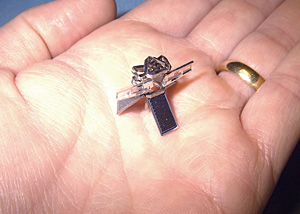INDIAN ARMED FORCES CHIEFS ON OUR RELENTLESS AND FOCUSED PUBLISHING EFFORTS

The insightful articles, inspiring narrations and analytical perspectives presented by the Editorial Team, establish an alluring connect with the reader. My compliments and best wishes to SP Guide Publications.

"Over the past 60 years, the growth of SP Guide Publications has mirrored the rising stature of Indian Navy. Its well-researched and informative magazines on Defence and Aerospace sector have served to shape an educated opinion of our military personnel, policy makers and the public alike. I wish SP's Publication team continued success, fair winds and following seas in all future endeavour!"

Since, its inception in 1964, SP Guide Publications has consistently demonstrated commitment to high-quality journalism in the aerospace and defence sectors, earning a well-deserved reputation as Asia's largest media house in this domain. I wish SP Guide Publications continued success in its pursuit of excellence.
- Indian Air Force Aims for Full Indigenous Inventory by 2047 — Air Chief Marshal A.P. Singh
- General Upendra Dwivedi takes over as the Chief of the Army Staff
- Rajnath Singh assumes charge as Defence Minister for the second consecutive term
- Admiral Dinesh K. Tripathi assumes Command of the Indian Navy as 26th Chief of the Naval Staff
- Prime Minister witnesses 'Bharat Shakti' – a Tri-Services Firing and Manoeuvre Exercise in Pokhran, Rajasthan
Insect-like UAVs to revolutionise surveillance

Insect-size, camera-bearing unmanned aerial vehicles (UAVs) are being developed that could help in emergency situations considered too dangerous for people or in covert military surveillance missions.
Richard Bomphrey, from the University of Oxford’s zoology department, is leading this research, which is generating new insight into how insect wings have evolved over the past 350 million years. The work is supported by the Engineering and Physical Sciences Research Council, the main UK government agency for funding research and training in engineering and the physical sciences.
“Nature has solved the problem of how to design miniature flying machines,” Bomphrey said. “By learning those lessons, our findings will make it possible to aerodynamically engineer a new breed of surveillance vehicles that, because they’re as small as insects and also fly like them, completely blend into their surroundings.”
Currently, the smallest of state-of-theart fixed-wing unma n n e d surveillance vehicles are around a foot wide. The incorporation of flapping wings is the secret to making the new designs so small. To achieve flight, any object requires a combination of thrust and lift. In man-made aircraft, two separate devices (engines and either fixed or rotating wings) are needed to generate these — this limits the scope for miniaturising flying machines.
But an insect’s flapping wings combine both thrust and lift. If man-made vehicles could emulate this more efficient approach, it would be possible to scale down flying machines to much smaller dimensions than is currently possible.
The team’s groundbreaking work has attracted the attention of NATO, the US Air Force and the European Office of Aerospace Research and Development. The research is expected to produce findings that can be used by the defence industry within three to five years, leading to the development and widespread deployment of insect-size flying machines within 20 years.





